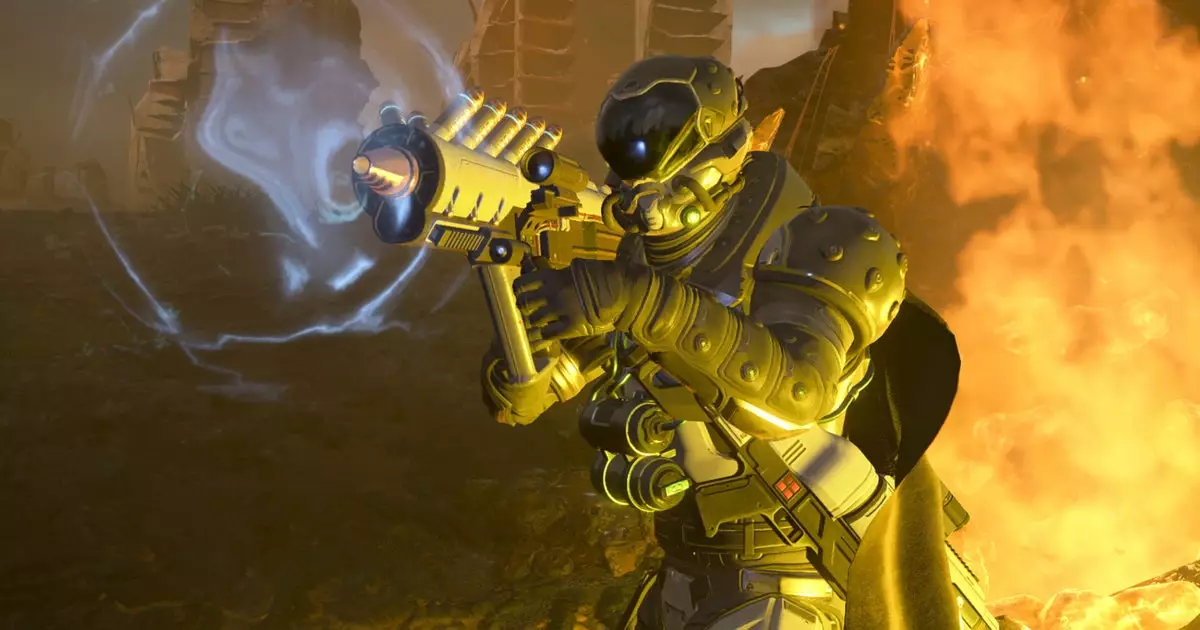In the saturated landscape of multiplayer shooters, Helldivers 2 distinguishes itself by daring to push the boundaries of conventional warfare. Its latest expansion, the Control Group warbond, exemplifies a bold shift toward integrating experimental alien technology into gameplay. Unlike typical genre entries that emphasize polish and safety, Helldivers 2 invites players to embrace chaos and unpredictable consequences, reflecting a philosophy that values daring innovation over stability. These new tools are not merely functional upgrades; they symbolize a philosophy of risk-taking, where victory may come at the expense of self-preservation, echoing the unpredictable nature of real military breakthroughs.
What makes this approach particularly compelling is the thematic embrace of alien tech—an element that elevates gameplay from mere shooting to an exploration of possible futures. These experimental weapons and stratagems are not polished artifacts but rather fragile, unstable marvels that amplify the tension. For example, the warp pack, which supposedly creates a “somewhat stable wormhole,” introduces a mechanic fraught with peril. The destabilization process has a poetic quality: it rewards daring but punishes complacency. The thrill, then, isn’t just in survival but in mastering chaos—a metaphor for innovation itself.
The Power of the Unpredictable: Exciting but Thorny Mechanics
The Control Group gear offers players a tantalizing mix of firepower and strategic options, but beneath its surface lies a core design philosophy rooted in risk and reward. The VG-70 Variable Volley Gun, with its triple firing modes—including one that risks self-destruction—embodies the essence of this philosophy. It’s a weapon that demands close attention and tactical restraint; unleash its full potential, and you might be the hero, or you might blow yourself to smithereens. Such design pushes players to think beyond the conventional, to weigh their options carefully, embodying a modern-day exploration into the ethics of technological advancement.
Similarly, the stratagems—specifically the warp pack, plasma gun, and laser sentry turret—are volatile, embodying a “high risk, high reward” paradigm. For instance, overcharging the plasma weapon might result in a spectacular explosion, while ignoring turret cooldowns could turn your own sentry into a kamikaze drone. This design choice emphasizes player responsibility in managing unstable tools, fostering a sense of agency but also highlighting the unpredictable nature of experimental science. It’s a breath of fresh air in a genre often criticized for its straightforwardness: here, the battlefield becomes a lab of chaotic innovation.
Design Philosophy: Embracing Chaos as a Concept of Power
By embracing the inherent chaos of experimental alien tech, Helldivers 2’s Control Group warbond advocates a design ethos centered on unpredictability. This represents a significant departure from traditional shooter models that prioritize balance, safety, and predictable mechanics. In contrast, Helldivers 2 champions flux—an environment where players are encouraged to take calculated risks and adapt on the fly. This strategic chaos mirrors real-world technological innovation, where groundbreaking discoveries often come with unintended consequences.
Moreover, the armor options—light and heavy sets with defibrillator-like revive functions—further reinforce the theme: resilience is fragile, and survival often hinges on quick thinking and the willingness to accept danger. It’s about inhabiting a realm where playing it safe is less appealing than daring to press the boundaries of technology and mortality. This ideology aligns with a broader philosophical stance that true progress involves risking collapse just to discover something revolutionary.
In a broader cultural context, this approach hints at a future where warfare integrates more deeply with unpredictable, potentially destabilizing technologies. Helldivers 2 doesn’t shy away from showcasing the moral ambiguity of using alien artifacts—highlighting that humanity’s reach for power often begins with risky experiments that could backfire spectacularly. The game’s design underscores that progress is not linear but a tumultuous journey, challenging players to navigate the fine line between innovation and catastrophe.

